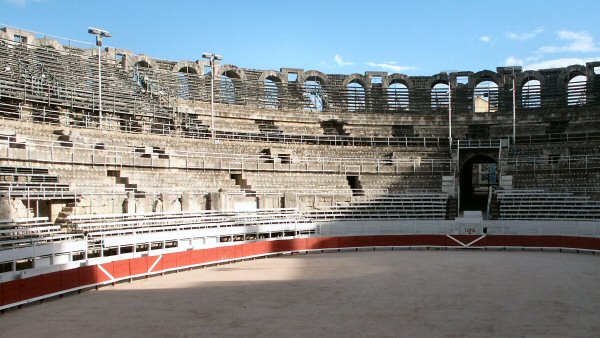
At Arles, there is more evidence of the Romans than
of Van Goch, although one cafe has been decorated to match his "Night
Cafe" painting. The original was destroyed in WW2.
This Roman amphitheater, one of the best preserved in France, has been
refitted with contemporary seats, and it is
used for concerts and festivals.
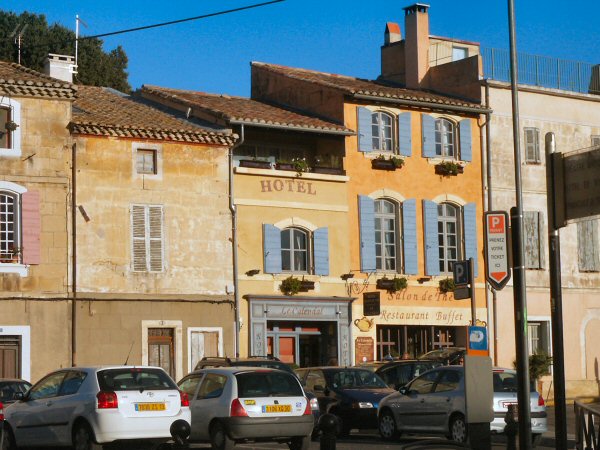
These blue shutters show the local color
scheme. This street lies more or less behind the Roman arena in
Arles. Actually, Arles seemed a bit run down.
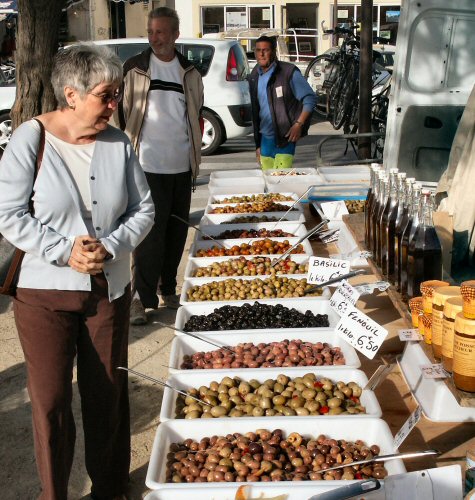
Stes. Maries de la Mer is the principal village in the Comargue, the delta between two branches of the Rhone where they empty into the Meditertanean Sea.
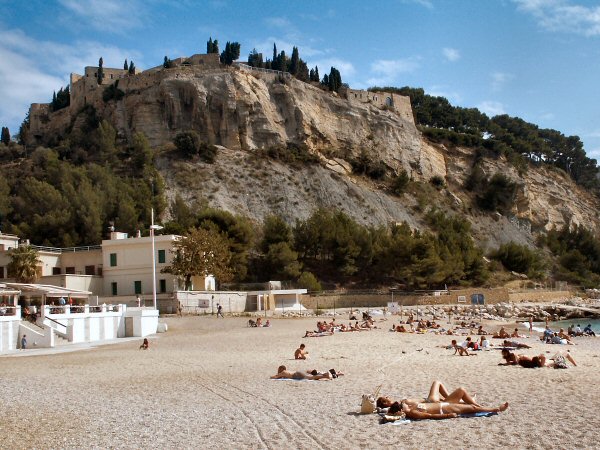
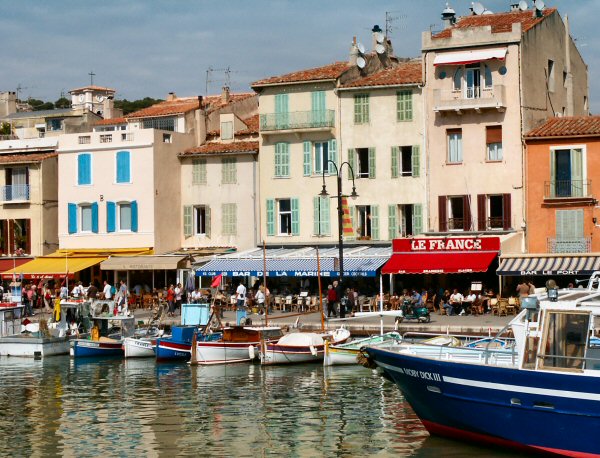
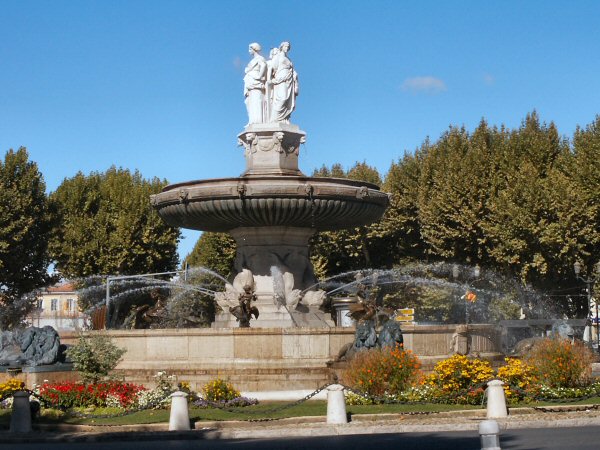
Aix-en-Provence was founded in 103 BC by the
Romans, in part because of its hot springs. It is known as the
"Town of a Thousand Fountains," even though there are only a hundred or
so. This is La Rotonde, and it dates to 1860.
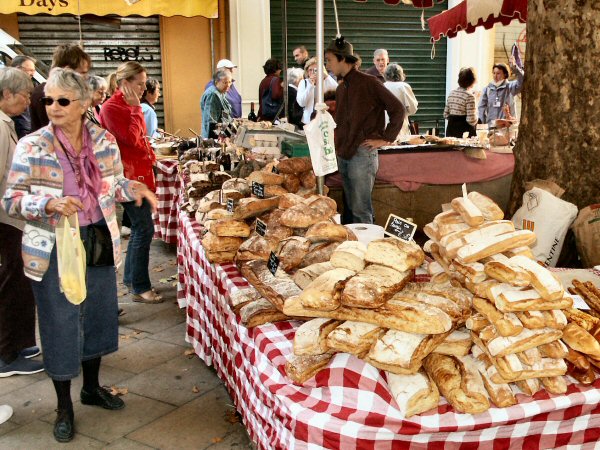
In the Old Town area of Aix, Sunday is a big market
day. Textiles, books, flowers and food all have their own
areas. One stall near this one had more kinds of mushrooms than I
could have guessed there were.
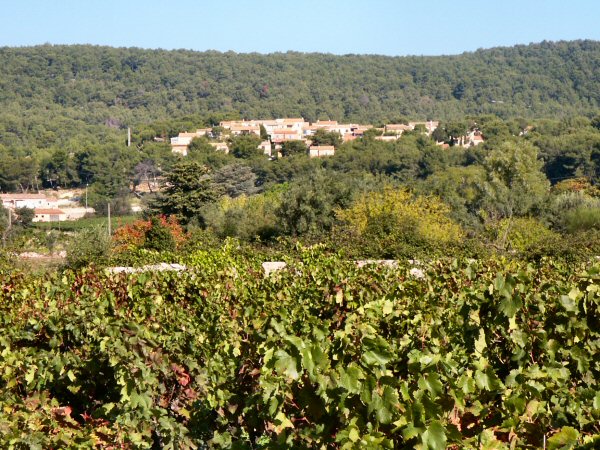
Finally, vineyards and villages. This is
outside of Cassis, at Domaine de la Ferme Blanche. The tiny
Cassis appellation is known for its white wines. This is the
image
of Provence, at least outside of the Côtes
d'Azure.